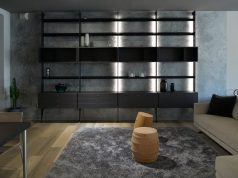
In our daily lives, we often take for granted the terminology used to describe the spaces where we gather, relax, and connect with family and friends. The term “living room” is one such phrase that has become commonplace, but its origins and evolution are rarely considered. Delving into why it is called a living room unveils a fascinating journey through architectural changes, societal norms, and linguistic nuances that have shaped our homes and culture. In this article, we will embark on a quest to unravel the mysteries behind this familiar term, shedding light on the rich tapestry of human history and the evolution of our living spaces.
Why Is It Called A Living Room?
The term “living room” has its roots in the evolution of domestic architecture and societal changes. In the past, homes often had distinct rooms for specific purposes, such as the parlor for formal gatherings. As social dynamics shifted, the need for a more casual, multipurpose space arose. This led to the emergence of the “living room” in the early 20th century, a name that reflected its function as a comfortable, everyday space where families “live” and spend quality time together. The evolution of this term mirrors the transformation of our homes and lifestyles over time.
The Evolution Of Living Spaces
The evolution of living spaces is a captivating journey through history, reflecting changes in architecture, cultural values, and societal dynamics. From humble hearths to today’s versatile living rooms, this evolution showcases our ever-adapting relationship with our homes.
In ancient times, homes primarily consisted of a single room, where families lived, slept, and cooked around a central hearth. These spaces were functional and focused on survival and basic shelter.
As societies advanced, homes began to include separate rooms with distinct functions. The “great hall” in medieval castles served as a communal gathering space, while bedrooms and kitchens became separate areas.
The Victorian era introduced the “parlor.” These elaborately decorated rooms were designed for formal gatherings and showcased the homeowner’s social status. Etiquette and decorum were paramount, and the parlor played a crucial role in defining one’s social standing.
In the early 20th century, societal changes, including the Great Migration in the United States, led to a shift in family dynamics and housing needs. The term “living room” emerged, signifying a more informal, family-oriented space. It reflected a shift away from the rigid formality of the Victorian parlor and a desire for a more relaxed atmosphere.
Architectural innovations and design trends also played a significant role in the evolution of living spaces. The advent of central heating, electricity, and open floor plans influenced the layout and functionality of living rooms.
Different cultures worldwide have their variations of living spaces, each reflecting unique customs and traditions. For example, the Japanese tatami room emphasizes simplicity and minimalism, while Arabic homes often feature a central courtyard for social gatherings.
Today, the living room has become a versatile, multifunctional space. It serves as an entertainment hub, a family gathering place, and even a home office. Technological advancements have further transformed living spaces, with “smart” features integrated into the modern living room.
How Do Different Cultures Describe Their Living Spaces?
Different cultures around the world have their unique ways of describing and conceptualizing their living spaces. These descriptions often reflect cultural values, traditions, and historical influences. Here are some examples of how different cultures describe their living spaces:
Japanese Tatami Room: In Japan, a traditional living space might be called a “tatami room.” Tatami mats cover the floor, creating a sense of simplicity and minimalism. This space is often used for various purposes, including tea ceremonies, meditation, and sleeping.
Arabic Majlis: In many Arabic cultures, the “majlis” is a prominent living space. It’s a room designed for social gatherings and hospitality. Majlis typically feature comfortable seating arrangements, often in a circular or U-shape, to facilitate conversations and communal activities.
Chinese Kang: In rural parts of China, you may find a “kang.” It’s a raised platform or heated bed built into the floor, often in the main living area. The Kang serves multiple functions, including sleeping, sitting, and warming up during cold winters.
Native American Hogan: Among various Native American tribes, a “hogan” is a traditional dwelling. It’s typically round or hexagonal and constructed with natural materials. The hogan represents a connection to the earth and is used for ceremonies, gatherings, and living quarters.
Swedish “Vardagsrum”: In Sweden, the “vardagsrum” is equivalent to the living room. It’s a central space in the home for relaxation and socializing. Swedish design often emphasizes functionality, simplicity, and natural materials.
Indian Drawing Room: In India, the “drawing room” is commonly used to describe the main living area of a house. It’s a space where guests are received, and it may be lavishly decorated. In some regions, it’s also called the “hall” or “sitting room.”
South African Kraal: In many South African cultures, a “kraal” is a traditional enclosure or living space. It often consists of a circle of huts or houses with a central gathering area. Kraals are used for various purposes, including living, cooking, and socializing.
Scandinavian “Stue”: In Scandinavian countries, such as Norway and Denmark, the “stue” is the living room. It’s a cozy and comfortable space for family gatherings, often featuring warm textiles and candles to create a welcoming atmosphere.
The Contemporary Living Room
The contemporary living room is the heart of today’s homes, embodying the ever-evolving needs and tastes of modern society. This dynamic space has transformed over the years to adapt to the fast-paced, technology-driven, and multifaceted nature of our lives. Here’s an exploration of what defines the contemporary living room:
Versatile Functionality:
Unlike its more formal predecessors, the contemporary living room is a versatile hub, accommodating various activities. It seamlessly transitions from a place for family gatherings to an entertainment center, a home office, and a cozy relaxation spot.
Open Concept Design:
Many contemporary homes embrace open floor plans, blurring the boundaries between the living room, kitchen, and dining area. This design fosters connectivity and encourages interaction among family members and guests.
Technological Integration:
Cutting-edge technology is pivotal in the contemporary living room. Smart TVs, state-of-the-art sound systems, and home automation systems are seamlessly woven into the space, enhancing entertainment and convenience.
Minimalist Aesthetics:
A hallmark of contemporary design is minimalism. Clean lines, neutral color palettes, and clutter-free spaces create a sense of simplicity and serenity. Furniture and decor are often chosen for their functionality and sleek design.
Comfort And Coziness:
Despite the minimalist approach, comfort remains a priority. Plush sofas, soft throws, and inviting rugs make the living room a comfortable and welcoming space for relaxation and socializing.
Abundant Natural Light:
Contemporary living rooms prioritize natural light. Large windows and glass doors are standard features, creating a sense of openness and a connection to the outdoors.
Personalization:
Many contemporary living rooms reflect the unique personalities and interests of their occupants. Homeowners often incorporate personal touches and eclectic decor items to make the space theirs.
Flexible Furniture:
Modular and convertible furniture is prevalent in contemporary design. Pieces can be rearranged or adapted to suit different activities, offering flexibility in a changing environment.
Conclusion
The contemporary living room stands as a testament to the ever-changing nature of our homes and lifestyles. It has evolved from its historical counterparts, embracing versatility, technology, and a minimalist aesthetic, all while retaining its fundamental role as the heart of the home. This dynamic space not only accommodates diverse functions but also reflects the values and priorities of modern society. It blends work and leisure, fosters connectivity, and promotes comfort and well-being. The contemporary living room is a canvas for personal expression, where individuals can infuse their unique style and interests.
FAQ’s
How Has The Design Of Living Rooms Evolved?
Living rooms have evolved from small, multifunctional spaces to more specialized areas, influenced by architectural trends, cultural shifts, and technological advancements. Open-concept designs and technology integration are prominent features of contemporary living rooms.
What Are Some Key Design Elements Of A Contemporary Living Room?
Contemporary living rooms often feature minimalist aesthetics with clean lines and neutral color palettes. They prioritize comfort and may incorporate flexible furniture, abundant natural light, and biophilic design elements.
How Do Different Cultures Describe Their Living Spaces?
Different cultures have unique terms and concepts for their living spaces. For example, the Japanese have tatami rooms, Arabic cultures have majlis, and Native Alaskans have qargis, each reflecting cultural values and traditions.




















